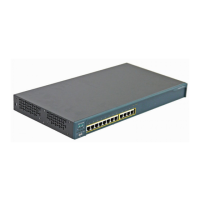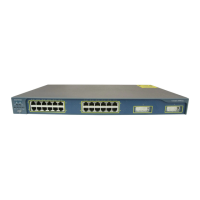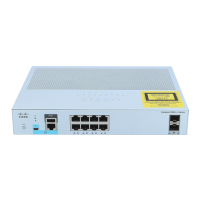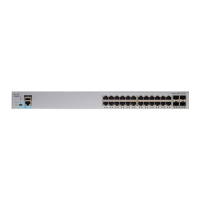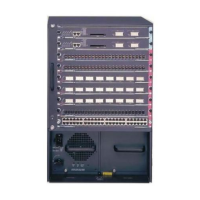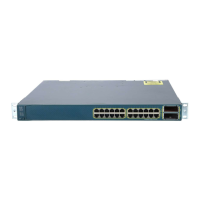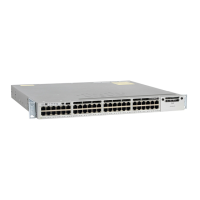7-16
Catalyst 2900 Series XL and Catalyst 3500 SeriesXL Software Configuration Guide
78-6511-08
Chapter 7 Configuring the Switch Ports
Configuring the LRE Ports
Configuring the LRE Ports
The Catalyst 2900 LRE XL switches use Long-Reach Ethernet (LRE) technology to transfer data, voice,
and video traffic over categorized and noncategorized unshielded twisted-pair cable (Category 1, 2,
and 3 structured and unstructured cable such as existing telephone lines).
Connecting a switch LRE port to a remote Ethernet device (such as a PC) requires two types of
connections:
• LRE link—This is the connection between the switch LRE port and the RJ-11 wall port on an LRE
customer premises equipment (CPE) device such as the Cisco 575 LRE CPE or Cisco 585 LRE
CPE. This connection can be through categorized or noncategorized unshielded twisted-pair cable
and can extend to distances of up to 4921 feet (1500 m).
• CPE Ethernet link—This is the connection between the CPE Ethernet port and an Ethernet device,
such as a PC. This connection is through standard Category 5 cabling and can extend to distances
of up to 328 feet (100 m).
The actual line speed in either direction between a switch LRE port and remote Ethernet device depends
on the LRE link speed and the CPE Ethernet link speed. For example, if a PC Ethernet port is configured
to 100 Mbps and the LRE port is configured with an upstream link speed of 5.69 Mbps, the actual upload
rate provided to the PC user is 5.69 Mbps, not 100 Mbps.
This section discusses these topics:
• “LRE Links and LRE Profiles” section on page 7-16
• “CPE Ethernet Links” section on page 7-21
• “Assigning a Public Profile to All LRE Ports” section on page 7-22
• “Assigning a Private Profile to an LRE Port” section on page 7-23
For LRE troubleshooting information, see the “Troubleshooting LRE Port Configuration” section on
page 9-9. Additional LRE details are provided in the switch command reference.
LRE Links and LRE Profiles
The LRE link settings define the connection between the switch LRE port and the CPE RJ-11 wall port.
The LRE link provides symmetric and asymmetric bandwidth for data, voice, and video traffic.
Symmetric transmission is when the downstream and upstream bandwidths are the same. Asymmetric
transmission is when the downstream and the upstream bandwidths differ. Downstream transmission
refers to the traffic traveling from the LRE switch to the CPE. Upstream transmission refers to the traffic
traveling from the CPE to the LRE switch.
The switch controls upstream and downstream rates on the LRE link by using configurations called
profiles. Depending on the profile, the upstream and downstream bands on an LRE link can range from
approximately 1 Mbps to 15 Mbps.
You can assign profiles on a per-port or switch-wide basis. When the LRE switch establishes a link with
the CPE, the switch downloads its profile settings to the CPE so that the switch and CPE operate with
the same configuration.
This section discusses these topics:
• “Types of LRE Profiles” section on page 7-17
• “Environmental Considerations for LRE Links” section on page 7-18
• “Considerations for Using LRE Profiles” section on page 7-19
